
Northern Blossom Bat The Australian Museum
Flying-foxes and their relatives range in size from the tiny blossom-bats that could fit in the palm of a human hand, through to the more familiar flying-foxes 'fruit bats', which can have a wingspan of more than a metre. Night vision

Northern blossombat (Macroglossus minimus pygmaeus Stock Photo Alamy
datasets have provided data to the Atlas of Living Australia for this species. Browse the list of datasets and find organisations you can join if you are interested in participating in a survey for species like Macroglossus minimus (Geoffroy, 1810) Accepted Name. Source. Macroglossus minimus (Geoffroy, 1810) AFD.

Pin by Tammy Carder on critters Bat species, Bat photos, Fruit bat
Pteropodidae (Flying Foxes, Fruit Bats and Blossom-bats) Scientific name Macroglossus minimus (Geoffroyi, 1810) Common name northern blossom bat Type reference Geoffroyi, E. (1810) Description des roussettes et des cephalotes, deux nouveaux genres de la famille des chauve-souris. Ann. Mus. Hist. Nat. Paris 15: 86-108. WildNet taxon ID 978.
Michael Durham Photography Northern Yellow Bat (Lasiurus intermedius)
Jacob Fitzbright ; Fact-checked by Sakshi Raturi 8 mins to read Contents Share this article Are you excited to learn more about the world of fruit bats? If yes, then come along with us on this journey to learn more about an exciting bat species that reside near northeastern Australia.
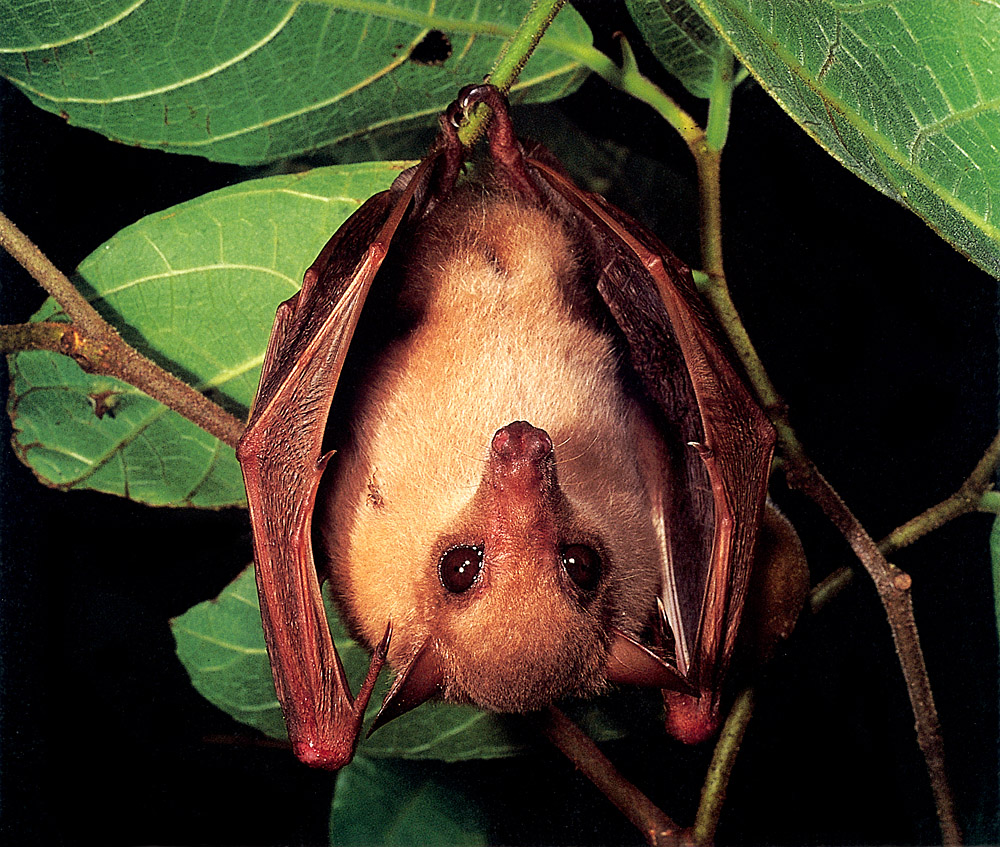
NATURE GEEK The Blossom Bat May Just Convince You That Some Winged Beasts Are Not Out to Suck
The long-tongued nectar bat ( Macroglossus minimus ), also known as the northern blossom bat, honey nectar bat, least blossom-bat, dagger-toothed long-nosed fruit bat, and lesser long-tongued fruit bat, is a species of megabat. M. minimus is one of the smallest species in the family Pteropodidae, with an average length of 60-85 mm.

Common Blossom Bat The Australian Museum
Northern Blossom Bats are important pollinators of many native Australian plants. In northeastern Queensland they also appear to pollinate commercially grown durian tees. Habitat. Northern Blossom Bats hang in palms, bamboos, mangroves, and trees in monsoon forests and rainforests. They roost alone or in small groups under loose bark, within.

Five Reasons to Love Bats Smithsonian Voices National Museum of Natural History Smithsonian
The long-tongued nectar bat ( Macroglossus minimus ), also known as the northern blossom bat, honey nectar bat, least blossom-bat, dagger-toothed long-nosed fruit bat, and lesser long-tongued fruit bat, is a species of megabat. M. minimus is one of the smallest species in the family Pteropodidae, with an average length of 60-85 mm.

Common blossom bat All About Bats
Eating insects is the most common diet among bats worldwide — a major benefit for our farmers. However, the role many of nectar-feeding bats play is just as important. Bats, like the Northern Blossom Bat (Macroglossus minimus) from Australia, pollinate the flowers of plants that produce nectar. Scientists believe that many plants have evolved.

Hairyfooted Moss Forest Blossom Bat (Syconycteris hobbit) West Sepik Pro ZooChat
Eastern Blossom Bat, Southern Blossom Bat Author(s) Louise Carter Updated 03/12/20; Read time 2 minutes; Share this page: Share on Facebook; Share on Twitter; Share on Linkedin. Northern Cave Bat. Inland Freetail Bat. Yellow-lipped Bat. Vespadelus douglasorum. Greater Long-eared Bat. Large-eared Pied Bat. Chalinolobus dwyeri.

Northern Blossom Bat Hanging From A Branch, Australia Photograph by Bruce Thomson
Northern Blossom Bat Macroglossus minimus This fruit bat is similar to S. australis but distinguished by strips of bare skin (interfemoral membrane) along the inside of the hind legs. It also has a small stub of a tail hidden in the body fur. This bat is an important pollinator of native plants.

Not Just the Birds and Bees 6 Fast Facts About Pollinating Bats The National Wildlife
The long-tongued nectar bat ( Macroglossus minimus ), also known as the northern blossom bat, honey nectar bat, [2] least blossom-bat, [3] dagger-toothed long-nosed fruit bat, [1] and lesser long-tongued fruit bat, [1] is a species of megabat. M. minimus is one of the smallest species in the family Pteropodidae, with an average length of 60-85 mm.
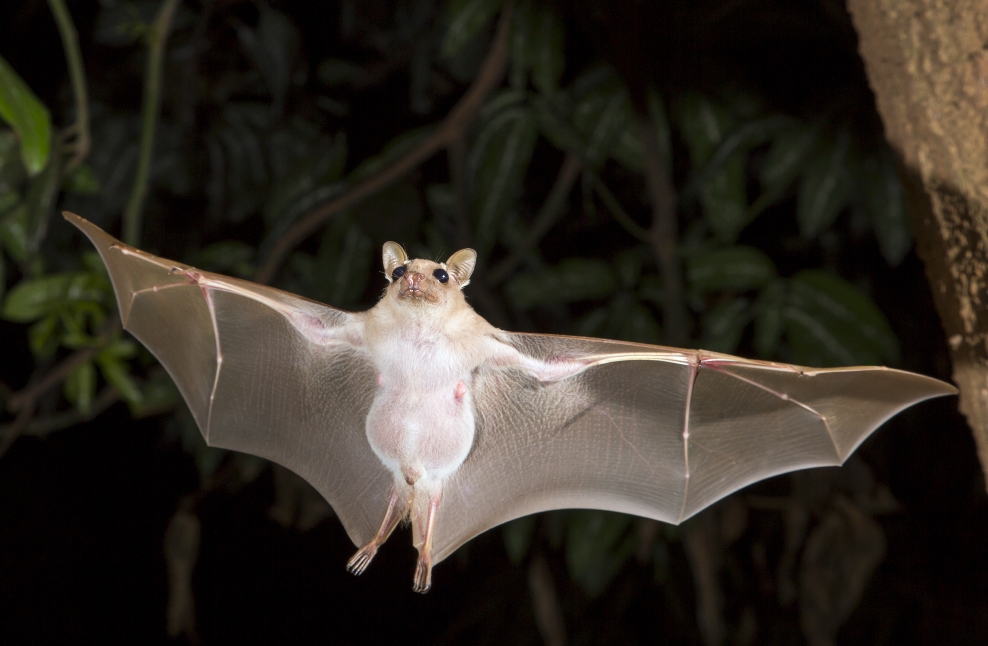
15 fun facts about bats (and how you can help) Charity Choice Blog
Northern Blossom-bat Macroglossus minimus. pp. 421-422 in Strahan, R. (ed.). The Mammals of Australia: The National Photographic Index of Australian Wildlife. Sydney : Reed New Holland 756 pp. McKean, J.L. & Hamilton-Smith, E. 1967. Litter size and maternity sites in Australian bats (Chiroptera).

New female bat to spark breeding interest of male bats at Territory Wildlife Park NT News
Bats, like the Northern blossom bat ( Macroglossus minimus) from Australia, pollinate the flowers of many plants, including mangrove and banana trees. Scientists believe that many groups of plants have adapted to attract bats, as they are able to carry much larger amounts of pollen in their fur compared to other pollinators.
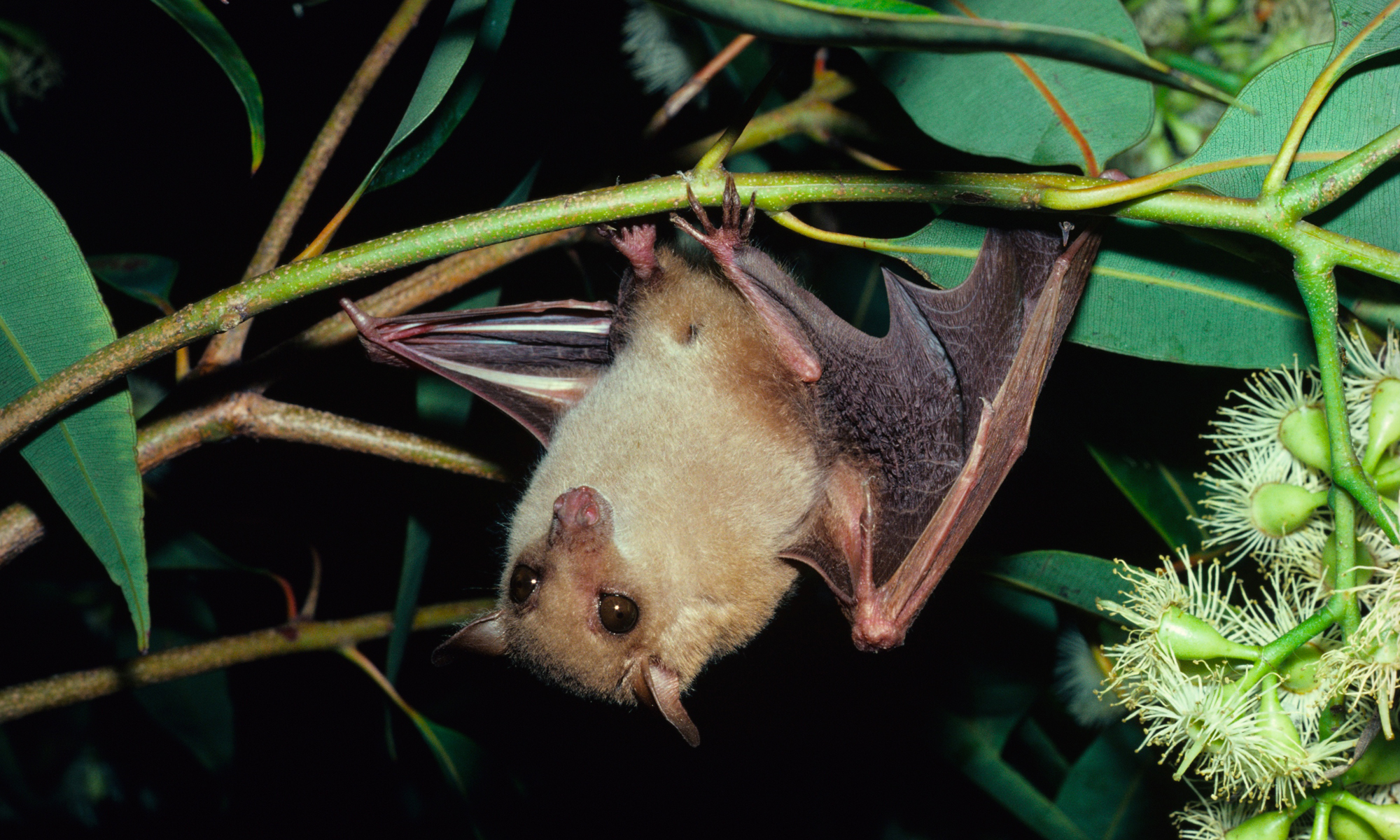
Common blossom bat All About Bats
Here's a sneak peek of some facts from the guide. 1. Eight species of these nocturnal creatures live in Ontario. They are: the hoary bat, the eastern red bat, the silver-haired bat, the big brown bat, the tricolored bat, the little brown myotis bat, the northern long-eared myotis and the eastern small-footed myotis.
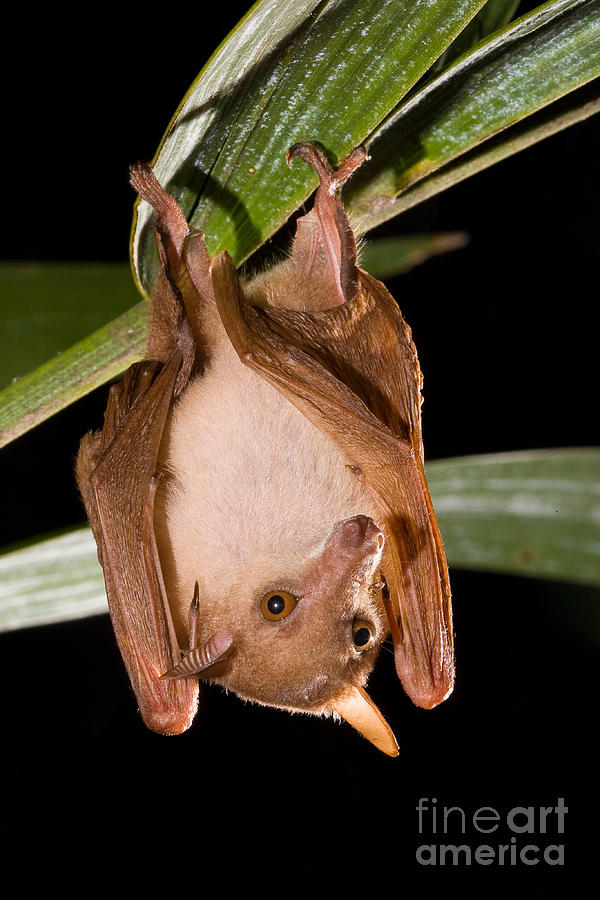
Northern Blossom Bat Photograph by B. G. Thomson
The long-tongued nectar bat (Macroglossus minimus), also known as the northern blossom bat, honey nectar bat, least blossom-bat, dagger-toothed long-nosed fruit bat, and lesser long-tongued fruit bat, is a species of megabat. M. minimus is one of the smallest species in the family Pteropodidae, with an average length of 60-85 mm. It has a reddish-brown colouring with relatively long hair.
Mother bats speak "baby talk" to their pups. A recent study showed that pupdirected
Syconycteris australis. This mouse-sized fruit bat can only be found in the sub-canopy of rainforest trees. It has a long thin muzzle and a very long tongue for feeding on nectar. It is one of the smallest of all the mega-bats weighing in at 15-19 grams, on average. Its size and fawn to reddish brown fur make it difficult to spot during.